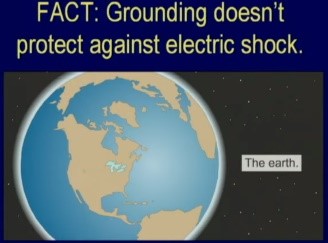|
There is an abundance of ˜how to' and instructional videos available on the internet. Most are done with the best of intentions and many are produced by knowledgeable and reliable sources. But how do you know if the video you're watching is technically accurate? That might depend on who's watching the video and their electrical education background. Are they qualified enough to recognize any misleading information? There's a difference between an installation that looks good and one that is safe. I do not support electrical work installed by a homeowner or not a ˜qualified person'. I would advise you to contact a licensed electrical contractor to do any work in your home.
The risks for loss of life, loss of property, shock, and fire are too great.
Each year I receive thousands of emails regarding a variety of electrical issues. Some just asking for my opinion to help resolve a point of contention with an inspector or a student challenging a question with their instructor. While still others are sent alerting me to a dangerous or hazardous situation. Such is the case with this ˜Video'.

Fiction. When I first watched this ˜Video', my reaction was, Wow! This may be one of the most dangerous videos I've ever seen! Not only does it illustrate improper techniques, but the commentary over top of the video also demonstrates a clear misunderstanding of the intent of and the difference between bonding and grounding!
You too might have a similar reaction to this ˜Video' if you understood the Fundamental concepts and Theory behind the physical characteristics of electricity and why connection to an ˜effective ground-fault current path' (bonding) is NOT the same as a connection to the Earth (grounding) when it comes to the safe use of electricity.
Grounding and Bonding, Article 250, is the most important and possibly least understood article in the NEC®. Surveys have repeatedly shown that a high percentage of electrical shocks and power quality problems are due to poor bonding or grounding (not to mention the hazards) created from the misapplication of the NEC rules. My textbooks and videos clearly define the differences between bonding and grounding and help you to finally understand just what each is and its essential function in electrical systems.
Fact. If you are the least bit uncertain about the differences between Bonding versus Grounding, or you just want to reinforce your current knowledge, I strongly encourage you to watch my video on Grounding - Safety Fundamentals.
For other grounding and bonding resources on our website click here, or to go directly to the bonding and grounding videos click here.

|

